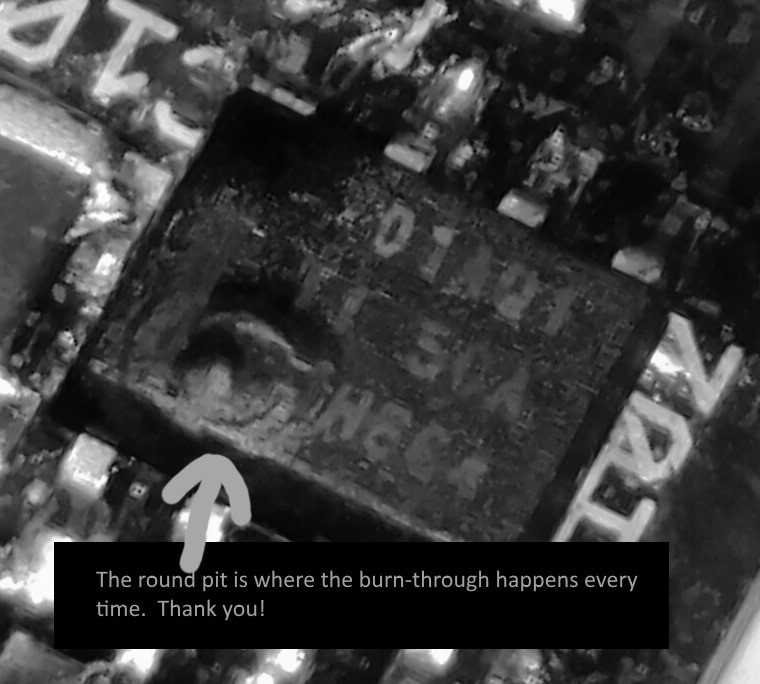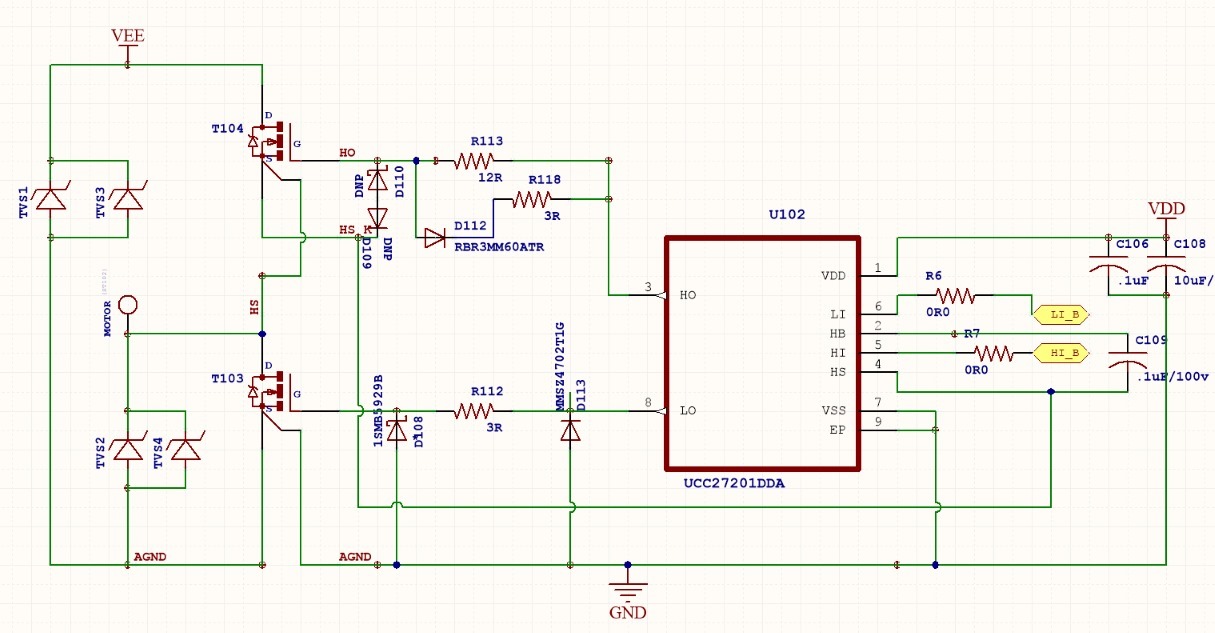Other Parts Discussed in Thread: UCC27201A, , UCC27211A-Q1
We am experiencing repeatable failures in a new design using the UCC27201A (and -Q1 version). The failure method is consistent; a spot on the chip turns bright red and and burns a hole through the top. I've went down several avenues attempting to figure out what is causing the failure and I am hoping you can help me focus the issue based on the location of the burn-through. I have attached an image of the chip - my apologies for the resolution but the microscope was busy and I hope this will be sufficient to identify the general location.
FET's: Large SOT-227 VS-FA72SA50LC with a 255nC/10nF gate.
VDD : 12v
Power: 48v
Rgate(hi)=12Ohm, (Diode+3Ohm for pull-down)
Rgate(lo)=3Ohm
LO protected by 16V Zener
HS protected by 75V TVS
Boost capacitor is various: from .1uF to 2.2uF (mostly .1uF). No correlation found to failure
48V is always on to the FET's before the 12V+5V for Driver+CPU starts up.
The issue has been difficult to reproduce on the bench and capture but is occurring pretty regularly during prototype testing. The failure always occurs within the first second or so on power-up. Power seems good although it's possible that HIN/LIN are being driven (5V) before VDD is all the way up to 12V.
The photo should appear after my name.
Thank you!
Rick



